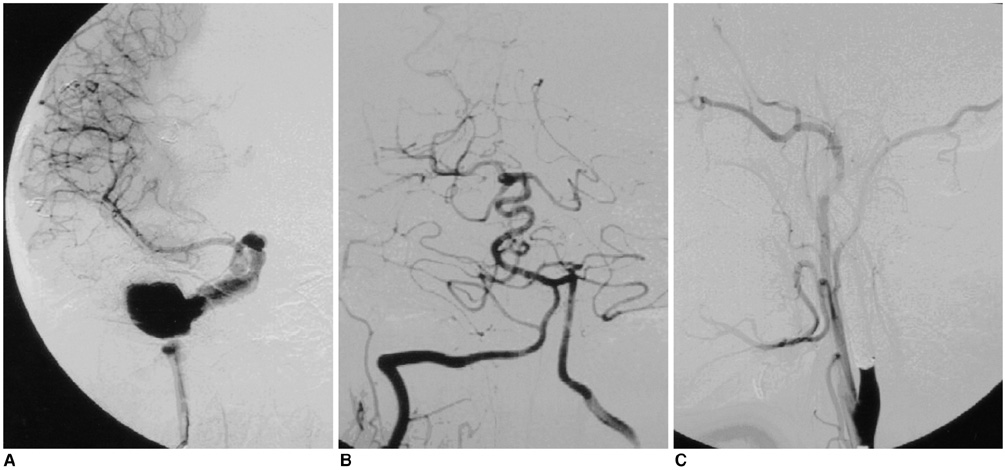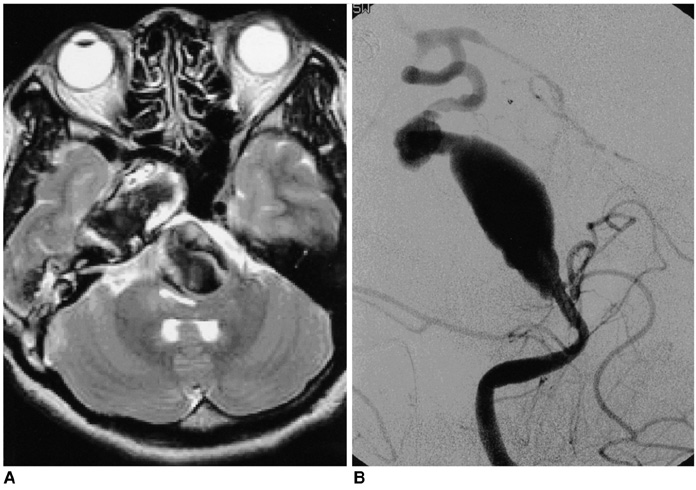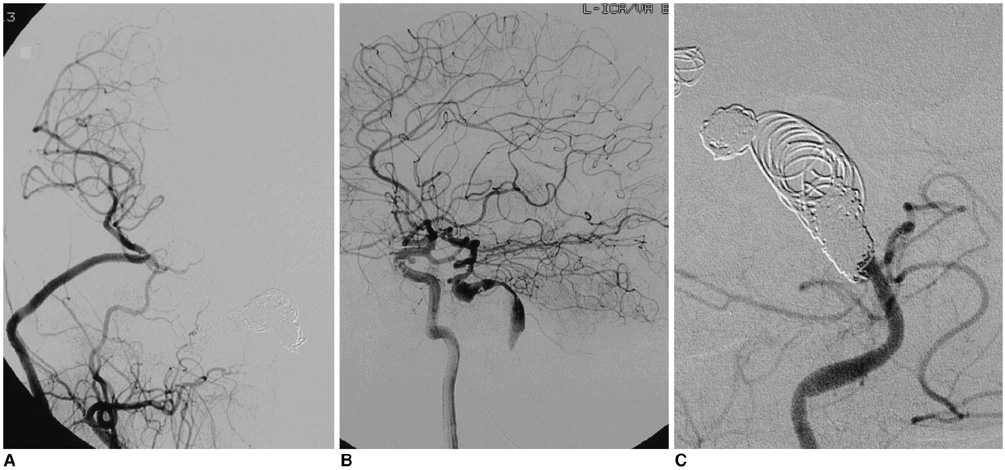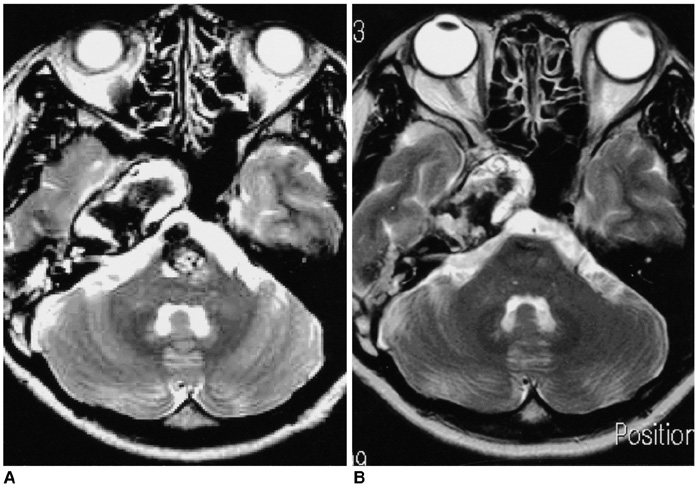Korean J Radiol.
2005 Jun;6(2):125-129. 10.3348/kjr.2005.6.2.125.
Treatment of a Sequential Giant Fusiform Aneurysm of the Basilar Trunk
- Affiliations
-
- 1Department of Neurosurgery, Konkuk University Hospital, Korea. hanmh@radcom.snu.ac.kr
- 2Department of Neurosurgery, Seoul National University College of Medicine, Korea.
- 3Clinical Research Institute, Seoul National University Hospital, Korea.
- 4Department of Radiology, Seoul National University College of Medicine, Korea.
- 5Department of Radiology and Center for Imaging Science, Samsung Medical Center, Sungkyunkwan University School of Medicine, Korea.
- KMID: 1783186
- DOI: http://doi.org/10.3348/kjr.2005.6.2.125
Abstract
- We report an exceptional case of a de novo giant fusiform aneurysm of the basilar trunk, which developed shortly after the therapeutic occlusion of the right internal carotid artery for a fusiform carotid aneurysm. It would appear to be appropriate to call this entity a sequential giant fusiform aneurysm. The patient was successfully treated with endovascular occlusion of the giant basilar trunk aneurysm following bypass surgery.
Keyword
MeSH Terms
Figure
Reference
-
1. Rinne JK, Hernesniemi JA. De novo aneurysms: special multiple intracranial aneurysms. Neurosurgery. 1993. 33:981–985.2. Johnston SC, Halbach VV, Smith WS, Gress DR. Rapid development of giant fusiform cerebral aneurysms in angiographically normal vessels. Neurology. 1998. 50:1163–1166.3. Drake CG, Peerless SJ. Giant fusiform intracranial aneurysms: review of 120 patients treated surgically from 1965 to 1992. J Neurosurg. 1997. 87:141–162.4. Anson JA, Lawton MT, Spetzler RF. Characteristics and surgical treatment of dolichoectatic and fusiform aneurysms. J Neurosurg. 1996. 84:185–193.5. Higashida RT, Smith W, Gress D, Urwin R, Dowd CF, Balousek PA, et al. Intravascular stent and endovascular coil placement for a ruptured fusiform aneurysm of the basilar artery. Case report and review of the literature. J Neurosurg. 1997. 87:944–949.6. Phatouros CC, Sasaki TY, Higashida RT, Malek AM, Meyers PM, Dowd CF, et al. Stent-supported coil embolization: the treatment of fusiform and wide-neck aneurysms and pseudoaneurysms. Neurosurgery. 2000. 47:107–113.7. Islak C, Kocer N, Albayram S, Kizilkilic O, Uzma O, Cokyuksel O. Bare stent-graft technique: a new method of endoluminal vascular reconstruction for the treatment of giant and fusiform aneurysms. AJNR Am J Neuroradiol. 2002. 23:1589–1595.8. Steinberg GK, Drake CG, Peerless SJ. Deliberate basilar or vertebral artery occlusion in the treatment of intracranial aneurysms. Immediate results and long-term outcome in 201 patients. J Neurosurg. 1993. 79:161–173.9. Leibowitz R, Do HM, Marcellus ML, Chang SD, Steinberg GK, Marks MP. Parent vessel occlusion for vertebrobasilar fusiform and dissecting aneurysms. AJNR Am J Neuroradiol. 2003. 24:902–907.10. Blanc R, Weill A, Piotin M, Ross IB, Moret J. Delayed stroke secondary to increasing mass effect after endovascular treatment of a giant aneurysm by parent vessel occlusion. AJNR Am J Neuroradiol. 2001. 22:1841–1843.11. Halbach VV, Higashida RT, Dowd CF, Barnwell SL, Fraser KW, Smith TP, et al. The efficacy of endosaccular aneurysm occlusion in alleviating neurological deficits produced by mass effect. J Neurosurg. 1994. 80:659–666.
- Full Text Links
- Actions
-
Cited
- CITED
-
- Close
- Share
- Similar articles
-
- Giant fusiform aneurysm at the basilar trunk treated with endovascular coil occlusion following bypass surgery for the flow diversion
- Endovascular Treatment of Giant Basilar Trunk Aneurysm: Case Report
- Fusiform Aneurysm on the Basilar Artery Trunk Treated with Intra-Aneurysmal Embolization with Parent Vessel Occlusion after Complete Preoperative Occlusion Test
- Three-Dimensional Fusion Angiography of a Giant Basilar Aneurysm for Coil Embolization
- Dual Stent-Assisted Coil Embolization for Fusiform Aneurysm Arising From Persistent Trigeminal Artery





